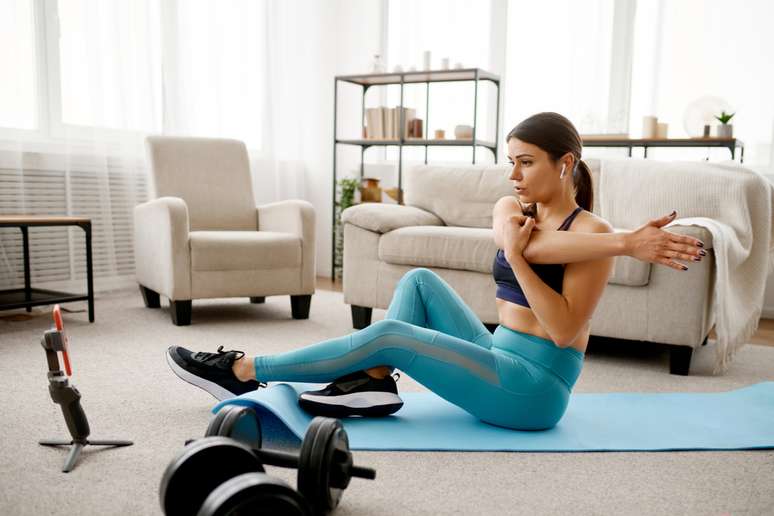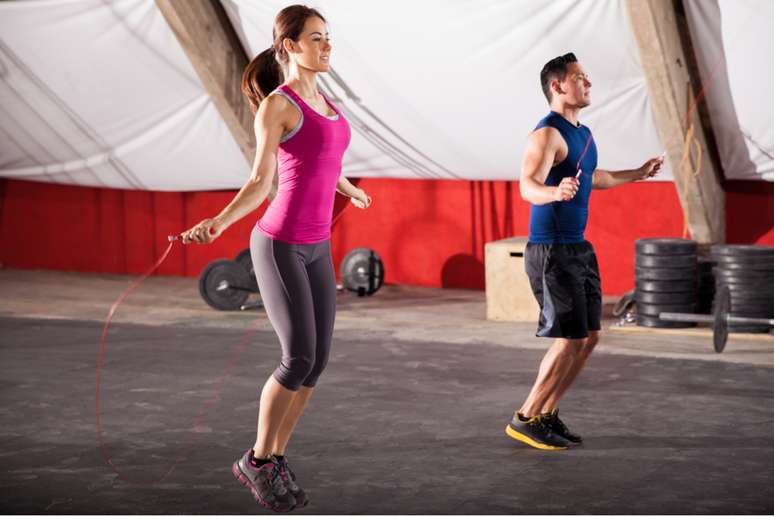The personal trainer teaches you how to perform physical activity correctly to achieve good results
Rope jumping is an aerobic physical activity that contributes to physical conditioning and aids in weight loss. However, as this is a high impact exercise, it must be done correctly to avoid health problems and ensure good results. Therefore, personal trainer Ângela Steck provides some tips on care. Watch!
html[data-range=”xlarge”] figure image img.img-03aac247f4eecf37f42f14f30d3727ca2g6zxgga { width: 774px; height: 516px; }HTML[data-range=”large”] figure image img.img-03aac247f4eecf37f42f14f30d3727ca2g6zxgga { width: 548px; height: 365px; }HTML[data-range=”small”] figure image img.img-03aac247f4eecf37f42f14f30d3727ca2g6zxgga, html[data-range=”medium”] figure figure img.img-03aac247f4eecf37f42f14f30d3727ca2g6zxgga { width: 564px; height: 376px; }
1. String material
Sisal ropes, widely used in the past, are no longer recommended today. They are very light, which contributes to the wrong practice of exercise. Prefer PVC or gel strings.
2. Ideal rope size
To perform the exercise correctly, the rope must be of the right length. To test this, step on it with both feet extended, stretch it next to your body, and see if it reaches chest height.
3. Recommended places to jump rope
Concrete, marble or asphalt floors, for example, require sneakers with shock absorbers. Rubberized floors or lawns reduce impact and are recommended.
4. Contraindications for practice
Jumping rope is not recommended for anyone with knee or ankle problems. People with hypertension or cardiovascular problems and overweight people who have not exercised for a long time should consult a doctor before starting any activity.

5. Importance of warming up and stretching
We must remember that it is important to warm up first, followed by muscle stretching, to avoid the risk of injury. Furthermore, it is also essential maintain hydration during exercise.
6. Start slowly
Anyone who doesn’t have much breath should start doing it skipping rope with fewer repetitions and a longer rest between them. For those with poor motor coordination, the ideal is to start without the rope, with small hops on the floor.
Then, with the rope in one hand, swing the rope to your side (it should touch the ground lightly next to your foot). Then, with the rope in both hands and behind your body, lift your toes, loop the rope around your body and secure it under your feet. Do this until it is familiar to you.
Source: Terra
Ben Stock is a lifestyle journalist and author at Gossipify. He writes about topics such as health, wellness, travel, food and home decor. He provides practical advice and inspiration to improve well-being, keeps readers up to date with latest lifestyle news and trends, known for his engaging writing style, in-depth analysis and unique perspectives.









